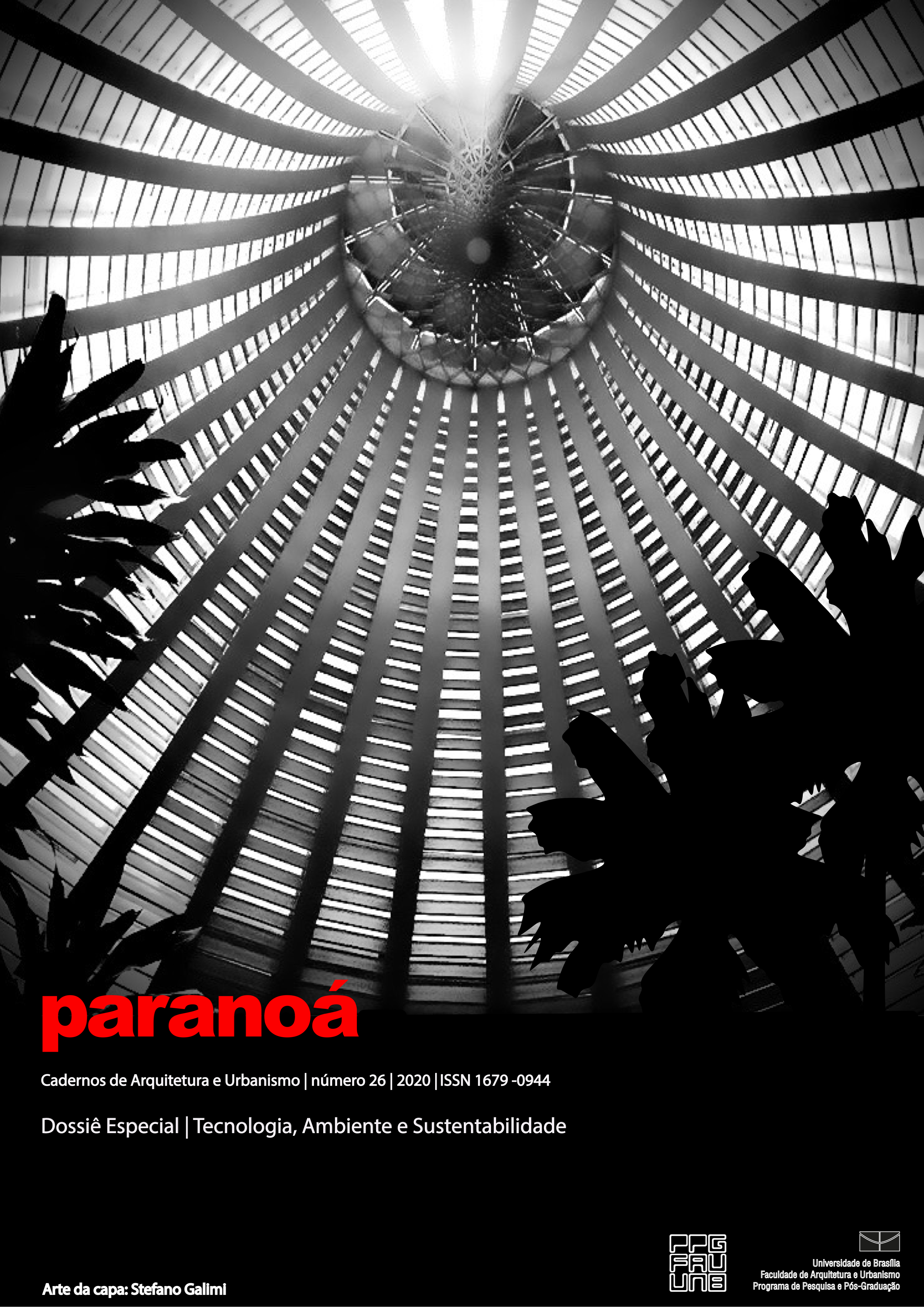Instrumentation for measurements on the microclimate scale:
a bioclimatic backpack proposal
DOI:
https://doi.org/10.18830/issn.1679-0944.n26.2020.07Keywords:
Urban microclimate; Arduino; open hardware; walking; public spaceAbstract
The monitoring of air temperature, among other microclimate variables, is essential for understanding the temperature distribution on a scale compatible with that of urban space. In the city, pedestrians experience different microclimate conditions over short distances, subject to variations in both environmental comfort and discomfort, particularly the thermal discomfort. The warm up of the urban environment reveals itself, then, as an opportunity for multidisciplinary studies that, in this work, is explored aiming to contextualize the teaching of architecture, urbanism and physics with the theme of the urban climate. Through research, ongoing since 2019, a prototype micrometeorological backpack for field measurements based on the Arduino platform was developed at Sustainable Laboratory of Urbanism and Architecture - LaSUS. A prototype was designed, tested and, when completed, it was called Bioclimatic Backpack. The results reinforce the value of integrating the different areas of knowledge for the design, construction, testing and validation of the prototype aiming at a low-cost replicable alternative for the study of the thermal environment in the city.
Downloads
References
BRASIL. Instituto Brasileiro de Geografia e Estatística (IBGE). Disponível online em: www.ibge.gov.br.
Brasil. Instituto Nacional de Meteorologia (INMET). Disponível online em: www.inmet.gov.br/portal/index.php?r=clima/graficosClimaticos.
FANGER, P.O. Assessment of man's thermal comfort in practice. British Journal of Industrial Medicine. V.30, p.313-324, 1973.
FERREIRA, L. e DUARTE, D. Exploring the potential of WUDAPT local climate zones maps to detect vegetation loss. In: Passive and Low Energy Architecture, Hong Kong, 2018. Proceedings. Hong Kong: p. 953 -954, 2018.
GARTLAND, L. Ilhas de calor: como mitigar zonas de calor em áreas urbanas. São Paulo, Oficina de Textos, 2010.
LAU, K.; SHI, Y. e NG, E. Dynamic response of pedestrian thermal comfort under outdoor transient conditions. In: URBANCEQ 2017 International Conference on Urban Comfort and Environmental Quality. 28-29 Setembro de 2017, p. 69-75, Genova, Itália, 2017.
LOMBARDO, Magda A. Ilha de calor nas metrópoles: o exemplo de São Paulo. São Paulo: Editora Hucitec, 1985. 244p.
OKE. T. R. Boundary layer climates. 2 ed. London: Methuen, 1987.
ROMERO, M. A. B.; BAPTISTA, G. M. de M.; LIMA, E. A. de; WERNECK, D. R.; VIANNA, E. O.; SALES, G. de L. Mudanças climáticas e ilhas de calor urbanas. 1. ed. Brasília: Universidade de Brasília, 2019. v. 1. 151p. Disponível em: http://repositorio.unb.br/handle/10482/34661
______ M. A. B. Arquitetura bioclimática do espaço público. 4ª reimpressão. Brasília: Editora Unb, 2015. 226p.
ROMERO, Marta Bustos: Arquitetura do Lugar. Uma visão Bioclimática da Sustentabilidade em Brasília. São Paulo: Nova Técnica Editorial, 2011.
SEMA-DF. Mudanças Climáticas no DF e RIDE. Secretaria do Meio Ambiente do Governo do Distrito Federal. [S.l.], p. 173. 2016.
TSIN, P.K.; KNUDBY, A.; KRAYENHOFF, E.; HO, H.C.; BRAUER, M. e HENDERSON, S. Microscale mobile monitoring of urban air temperature. Urban Climate. V.18, p.58-72, 2016.
VIANNA, E. O. O campo térmico urbano: ilhas de calor em Brasília ”“ DF. Tese de Doutorado pelo Programa de Pós-Graduação da Faculdade de Arquitetura e Urbanismo da Universidade de Brasília, 2018.
WMO. World Meteorological Organization. Guide to meteorological instruments and methods of observation, 2008. Disponível online em: https://www.wmo.int/pages/prog/www/IMOP/publications/CIMO-Guide/OLD-pages/CIMO_Guide-7th_Edition-2008.html
Downloads
Published
How to Cite
Issue
Section
License
Copyright (c) 2020 Paranoá: journal of Architecture and Urbanism

This work is licensed under a Creative Commons Attribution 4.0 International License.
Autores que publicam nesta revista concordam com os seguintes termos:
- Autores mantém os direitos autorais e concedem à revista o direito de primeira publicação, com o trabalho simultaneamente licenciado sob a Licença Creative Commons Attribution que permite o compartilhamento do trabalho com reconhecimento da autoria e publicação inicial nesta revista. http://creativecommons.org/licenses/by/4.0
- Autores têm autorização para assumir contratos adicionais separadamente, para distribuição não-exclusiva da versão do trabalho publicada nesta revista (ex.: publicar em repositório institucional ou como capítulo de livro), com reconhecimento de autoria e publicação inicial nesta revista.
- Autores têm permissão e são estimulados a publicar e distribuir seu trabalho online (ex.: em repositórios institucionais ou na sua página pessoal) a qualquer ponto antes ou durante o processo editorial, já que isso pode gerar alterações produtivas, bem como aumentar o impacto e a citação do trabalho publicado (Veja O Efeito do Acesso Livre).















